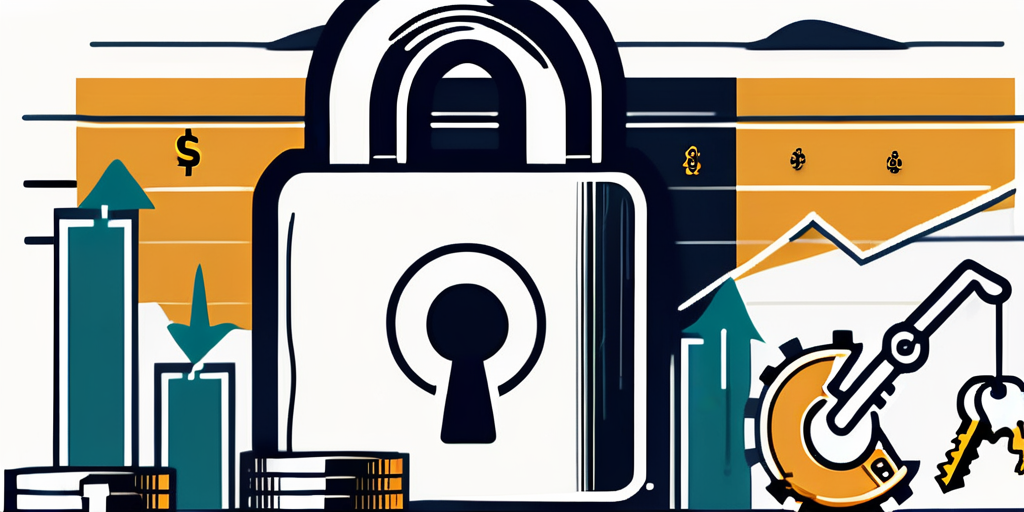
Unlock Profits with Distressed Debt Investing: Strategies for Success
In today’s volatile and uncertain financial landscape, investors are constantly on the lookout for strategies that can help them unlock profits and achieve success. One such strategy that has gained significant attention in recent years is distressed debt investing. This article will guide you through the various aspects of distressed debt investing and provide you with strategies for success.
Understanding Distressed Debt Investing
Distressed debt refers to the debt of companies that are facing financial distress or undergoing restructuring. These companies often have low credit ratings and their debt is trading at significant discounts from its face value. Distressed debt investors seek to capitalize on these opportunities by purchasing the debt at a discount and eventually profiting from its recovery.

One of the key advantages of distressed debt investing is the potential for high returns. As the distressed company improves its financial situation, the value of its debt increases, allowing the investor to sell it at a premium. However, this investment strategy is not without risks, as the distressed company may fail to recover, leading to potential losses.
Distressed debt investing requires a deep understanding of bankruptcy laws and financial restructuring processes. Investors need to carefully analyze the distressed company’s financial statements, debt structure, and industry trends to assess the likelihood of a successful turnaround. Additionally, successful distressed debt investors often have strong relationships with key stakeholders, such as creditors and management teams, to navigate complex restructuring negotiations.
Furthermore, timing is crucial in distressed debt investing. Investors need to identify opportunities early in the distress cycle to maximize potential returns. This requires constant monitoring of the market and staying informed about macroeconomic factors that could impact the distressed debt market.
Evaluating Risk and Reward in Distressed Debt
Before diving into the world of distressed debt investing, it is crucial to evaluate the potential risks and rewards associated with this strategy. Conducting thorough due diligence is essential in order to uncover any hidden risks and ensure that the potential rewards outweigh the potential losses.
When evaluating distressed debt investments, it is important to assess the company’s financial health, industry dynamics, and market conditions. Understanding the company’s business model, competitive position, and prospects for recovery will help investors make informed decisions.
Another factor to consider is the position in the capital structure. Senior secured debt holders have higher priority in terms of repayment, providing more protection in case of default. On the other hand, subordinated debt holders may face greater risks but also have the potential for higher returns.
Moreover, analyzing the legal aspects of distressed debt investments is crucial. Understanding the covenants and terms of the debt instruments is essential in order to assess the rights and protections available to investors in case of default. Legal expertise is often required to navigate the complex legal landscape of distressed debt investing.
Furthermore, assessing the macroeconomic environment and its impact on distressed debt investments is key. Factors such as interest rates, inflation, and overall market conditions can significantly influence the success of distressed debt strategies. Keeping a pulse on economic indicators and trends is vital for making well-informed investment decisions in this space.
Developing a Distressed Debt Investment Strategy
Developing a well-defined investment strategy is crucial for success in distressed debt investing. A disciplined approach and a focus on value creation are key to generating attractive returns.
One strategy is to focus on companies with strong underlying assets that are experiencing temporary financial difficulties. By providing liquidity and working closely with management, investors can help these companies navigate through their challenges and ultimately benefit from the appreciation of the assets.
Another approach is to specialize in a particular industry or geographical region. This expertise allows investors to better evaluate opportunities and execute successful distressed debt investments.
It is also important for investors to consider macroeconomic factors that may impact the distressed debt market. Factors such as interest rates, inflation, and overall market conditions can significantly influence the performance of distressed debt investments. By staying informed and monitoring these macroeconomic indicators, investors can make more informed decisions and adjust their strategies accordingly.
Furthermore, building strong relationships with other investors, lenders, and industry professionals can provide valuable insights and potential collaboration opportunities in the distressed debt market. Networking within the industry can lead to access to exclusive deal flow and the ability to leverage collective expertise for successful investment outcomes.
Identifying Opportunities in the Distressed Debt Market
The distressed debt market can offer a wide range of opportunities for investors. It is important to continuously monitor the market and stay abreast of potential investments.

There are several sources of distressed debt opportunities, including public debt exchanges, private negotiations with lenders, and distressed debt funds. Keeping a close eye on bankruptcies, restructurings, and distressed sales can also help identify potential investments.
Public debt exchanges are a common avenue for distressed debt investors to acquire assets at a discount. These exchanges allow companies in financial distress to exchange their existing debt for new securities, often at a reduced value. By participating in these exchanges, investors can gain access to distressed assets at a lower cost than their face value.
Private negotiations with lenders can also present lucrative opportunities in the distressed debt market. In some cases, lenders may be willing to sell distressed debt at a significant discount in order to offload risky assets from their portfolios. Establishing relationships with lenders and financial institutions can provide investors with access to exclusive deals and a competitive edge in acquiring distressed assets.
Due Diligence in Distressed Debt Investing
Thorough due diligence is essential in distressed debt investing in order to mitigate risks and make informed investment decisions.

During the due diligence process, investors should analyze the company’s financial statements, debt structure, and legal agreements. Understanding the risks associated with the company’s assets, such as real estate or intellectual property, is also crucial.
Additionally, assessing the management team’s ability to execute a turnaround plan and potential regulatory or legal issues is important for a comprehensive due diligence process.
Furthermore, it is imperative for investors to conduct a thorough market analysis to understand the industry trends and competitive landscape in which the distressed company operates. By gaining insights into market dynamics, investors can better assess the company’s positioning and potential for recovery.
Moreover, exploring the macroeconomic factors that could impact the company’s performance, such as interest rates, inflation, and overall economic outlook, is essential in conducting a holistic due diligence process. By considering these external factors, investors can anticipate potential challenges and opportunities for the distressed company.
Negotiating and Structuring Distressed Debt Deals
Negotiating and structuring distressed debt deals require careful negotiation skills and attention to detail.
When negotiating with distressed companies or their representatives, investors should aim to maximize their position by obtaining favorable terms and protections. This may include changes to the debt structure, such as converting debt into equity or obtaining additional collateral.
Structuring distressed debt deals also involves considering the potential tax implications, legal constraints, and the overall investment strategy. Working with experienced legal and financial professionals can help navigate the complexities of structuring these deals.
Furthermore, it is crucial for investors to conduct thorough due diligence before entering into distressed debt deals. This involves analyzing the financial health of the company, understanding the reasons behind its distress, and assessing the potential risks and rewards of the investment.
Another important aspect to consider when negotiating distressed debt deals is the existing relationships between the distressed company and its creditors. Understanding the dynamics of these relationships can provide valuable insights into the likelihood of a successful restructuring or workout.
Managing and Monitoring Distressed Debt Investments
Once an investment in distressed debt is made, effective management and monitoring are crucial to maximize returns.
Regular monitoring of the company’s financial performance, market conditions, and industry trends is essential. This allows investors to proactively manage risks and identify opportunities to further enhance the investment.
Working closely with the company’s management team and providing strategic guidance can also contribute to the successful turnaround of the distressed company.
Furthermore, conducting thorough due diligence before investing in distressed debt is paramount. This involves analyzing the company’s financial statements, debt structure, and operational challenges to assess the potential risks and rewards of the investment. Understanding the underlying reasons for the company’s distress is key to developing a comprehensive turnaround strategy.
Engaging with stakeholders, including creditors, suppliers, and customers, is another critical aspect of managing distressed debt investments. Building strong relationships and open communication channels can help navigate complex restructuring processes and facilitate consensus among various parties involved.
Exit Strategies for Distressed Debt Investments
Having a well-defined exit strategy is important in distressed debt investing to realize profits and generate liquidity.
One common exit strategy is to sell the distressed debt once its value has increased due to the company’s recovery. Alternatively, investors may choose to hold the debt until maturity and collect interest payments, especially if the debt has a high yield.
In some cases, investors may also consider selling their position to a strategic buyer or another investor who sees additional value in the distressed company.
Another exit strategy that investors often consider is debt-to-equity conversion. This strategy involves converting the distressed debt into equity ownership in the company. By doing so, investors can potentially benefit from the company’s future growth and profitability, turning their distressed debt investment into a long-term equity stake.
Furthermore, some investors opt for a refinancing exit strategy, where they work with the distressed company to refinance its debt at more favorable terms. This can help the company improve its financial position and provide investors with the opportunity to exit their investment with better returns.
Case Studies in Successful Distressed Debt Investing
Examining case studies of successful distressed debt investments can provide valuable insights and lessons for investors.
One such case study is the acquisition of distressed debt of a struggling retail company. Through careful analysis and strong management involvement, the investors were able to turn the company around by implementing cost-cutting measures, improving operational efficiency, and enhancing the company’s brand.
Another case study involves the investment in distressed debt of a real estate development company. Despite facing challenges in the aftermath of the financial crisis, the investors successfully navigated through the market downturn and eventually sold the company at a substantial profit.
Delving deeper into the retail company case study, it’s fascinating to note the specific strategies employed by the investors to revitalize the struggling business. In addition to the operational changes mentioned, the investors also focused on restructuring the company’s debt obligations, negotiating with creditors to alleviate financial burdens, and strategically repositioning the company within the competitive market landscape. These multifaceted efforts not only stabilized the company’s financial health but also positioned it for long-term growth and sustainability.
Turning our attention to the real estate development company case study, it’s intriguing to explore the challenges faced by the investors during the turbulent times following the financial crisis. In addition to adapting to the evolving market conditions, the investors demonstrated resilience and strategic foresight by diversifying the company’s portfolio, identifying undervalued assets for acquisition, and leveraging strategic partnerships to drive growth. These proactive measures not only safeguarded the company against market volatility but also maximized returns for the investors upon the successful sale of the company.
Tips for Success in Distressed Debt Investing
Here are a few tips to help investors achieve success in distressed debt investing:
- Develop a disciplined investment strategy and stick to it.
- Build a strong network of professionals in the distressed debt market and leverage their expertise.
- Continuously monitor the market and stay informed about potential investment opportunities.
- Conduct thorough due diligence to understand the risks and evaluate the potential rewards.
- Stay patient and be prepared for the long-term nature of distressed debt investments.
Distressed debt investing can be a lucrative strategy for investors who are willing to carefully evaluate risks, seize opportunities, and navigate through the complexities of this market. By understanding the fundamentals and implementing sound strategies, investors can unlock profits and achieve success in distressed debt investing.
One key aspect of successful distressed debt investing is the ability to identify distressed companies that have the potential to turn around their financial situation. This requires a deep understanding of financial statements, market trends, and industry dynamics. Investors must be able to differentiate between temporary setbacks and fundamental weaknesses in a company’s operations.
Furthermore, building relationships with key stakeholders in distressed companies, such as management teams, creditors, and advisors, can provide valuable insights and opportunities for collaboration. By establishing trust and credibility within the distressed debt market, investors can gain access to exclusive deals and information that may not be readily available to the general investing public.

